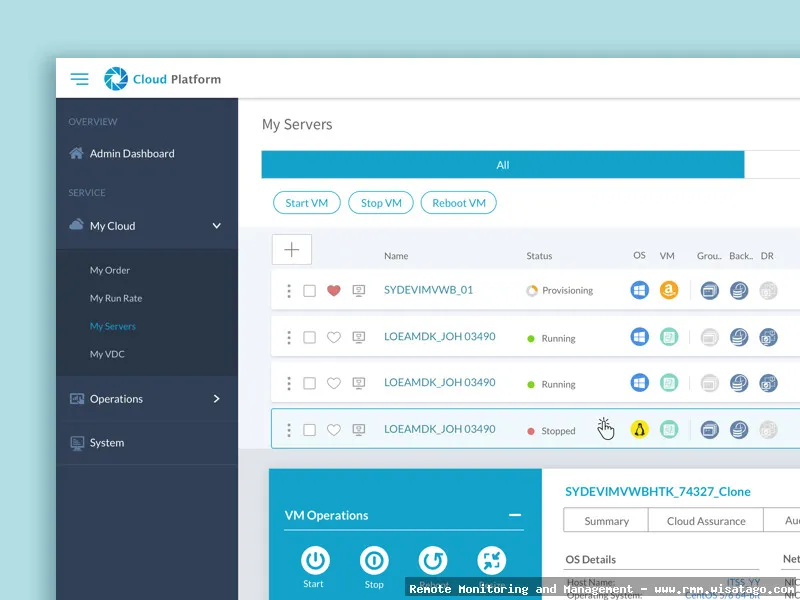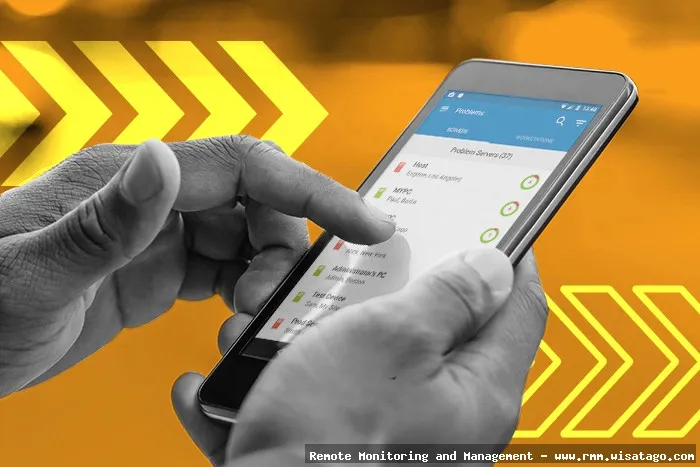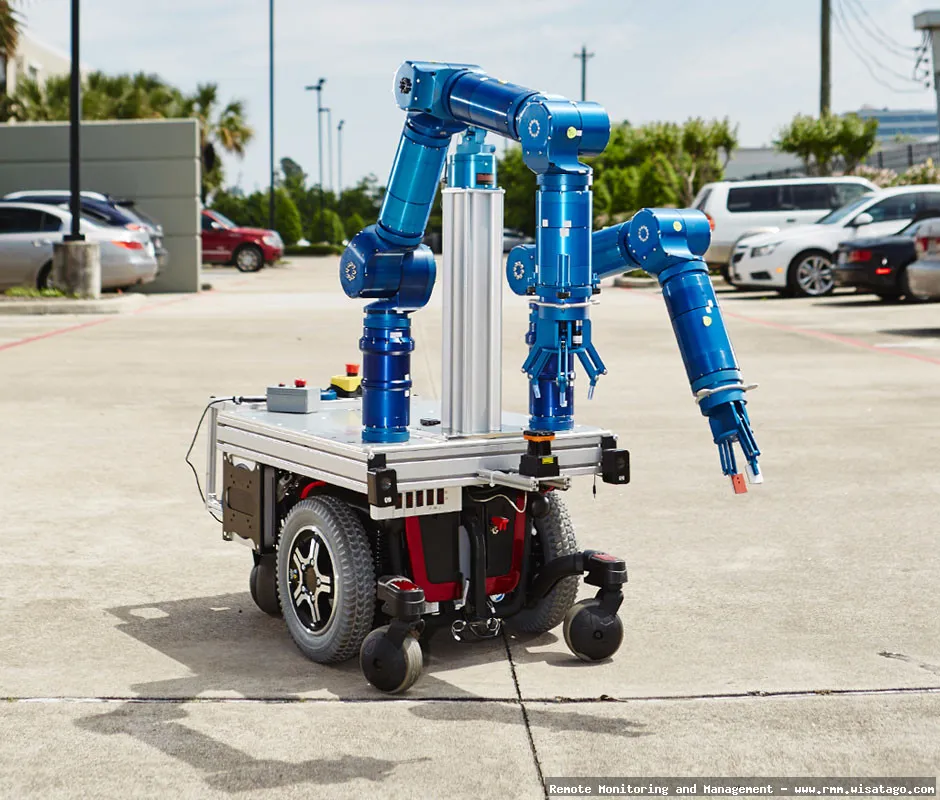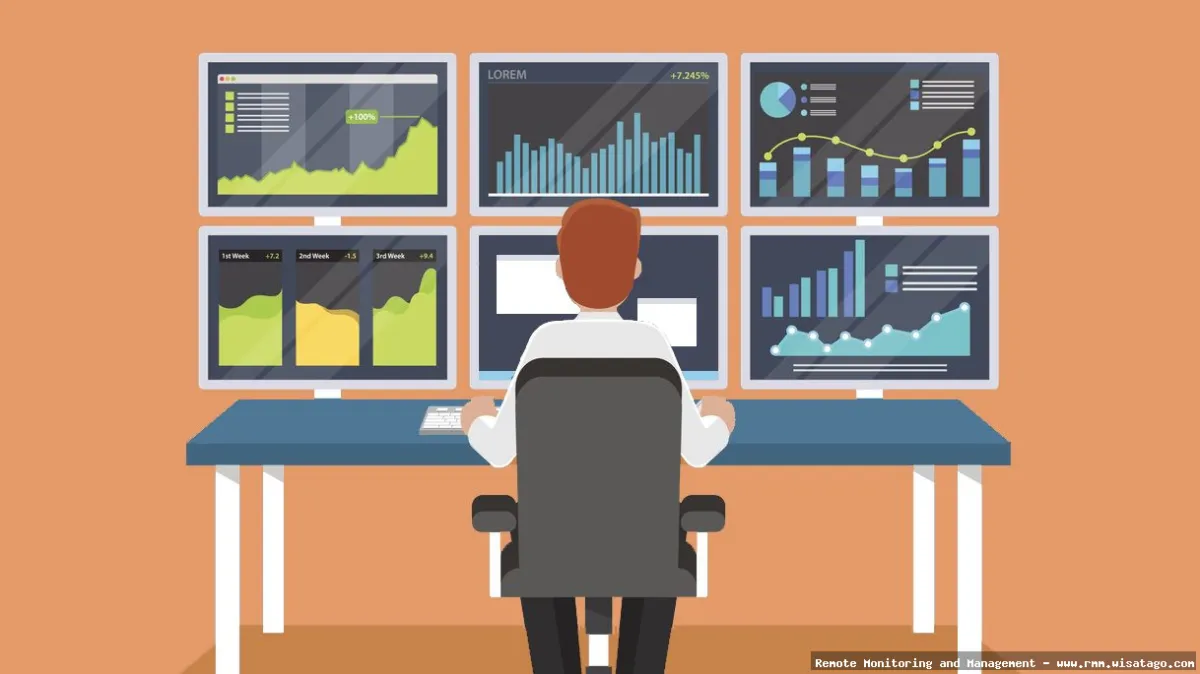In today’s dynamic IT landscape, managing virtual machines (VMs) efficiently is paramount for businesses of all sizes. Virtualization offers incredible flexibility and resource optimization, but the complexity of managing multiple VMs across various hypervisors can quickly become overwhelming. That’s where Remote Monitoring and Management (RMM) platforms step in, offering a centralized solution for streamlined VM management.
Think of RMM as your IT team’s command center. It’s a software suite that allows you to remotely monitor, manage, and support your entire IT infrastructure, including those crucial virtual machines. Instead of manually logging into each server or VM to check its status, apply updates, or troubleshoot issues, you can do it all from a single, user-friendly dashboard. This not only saves time and resources but also significantly improves overall IT efficiency and responsiveness.

This article aims to provide a comprehensive guide to virtual machine management through RMM platforms. We’ll delve into the core features, benefits, and practical considerations of integrating RMM solutions into your VM environment. Whether you’re a seasoned IT professional or just starting to explore the world of virtualization and RMM, this guide will equip you with the knowledge you need to make informed decisions and optimize your VM infrastructure for peak performance and reliability.
Understanding the Basics: RMM and Virtual Machines
At its core, an RMM platform provides a centralized interface for managing a distributed IT environment. It uses agents installed on endpoints – servers, workstations, and, importantly, virtual machines – to collect data, automate tasks, and provide remote access. Virtual machines, on the other hand, are software-based emulations of physical computers, allowing you to run multiple operating systems and applications on a single physical server. The combination of these two technologies creates a powerful synergy for efficient IT management.
The Role of RMM Agents in VM Management
The RMM agent is the key to unlocking the power of remote management. Once installed on a VM, the agent continuously monitors its health, performance, and security status. It collects data on CPU usage, memory consumption, disk space, network activity, and more. This data is then transmitted back to the RMM platform, where it’s analyzed and presented in a clear and actionable format. The agent also allows for remote execution of tasks, such as software updates, patch management, and troubleshooting commands. For more information, you can refer to RMM as an additional resource.
Supported Hypervisors and Virtualization Platforms
A good RMM platform should support a wide range of hypervisors and virtualization platforms, including VMware vSphere, Microsoft Hyper-V, Citrix XenServer, and KVM. This ensures that you can manage all your VMs, regardless of the underlying virtualization technology, from a single pane of glass. Compatibility is crucial for avoiding vendor lock-in and maintaining flexibility in your IT infrastructure.
Key Features of RMM for Virtual Machine Management
RMM platforms offer a wealth of features specifically designed for managing virtual machines. These features streamline IT operations, improve efficiency, and enhance the overall reliability of your VM environment.
Real-time Monitoring and Alerting
One of the most valuable features of RMM is its real-time monitoring capabilities. The platform continuously monitors the performance and health of your VMs, alerting you to potential issues before they escalate into serious problems. For example, you can set up alerts for high CPU usage, low disk space, or network connectivity issues. These alerts can be delivered via email, SMS, or through the RMM platform’s dashboard, allowing you to respond quickly and proactively to emerging problems.
Patch Management and Software Updates
Keeping your VMs up-to-date with the latest security patches and software updates is critical for protecting them against vulnerabilities and ensuring optimal performance. RMM platforms automate the patch management process, allowing you to deploy updates to multiple VMs simultaneously. You can schedule updates to run during off-peak hours to minimize disruption to users, and you can track the status of updates to ensure that all VMs are properly patched.
Remote Access and Control
RMM platforms provide secure remote access to your VMs, allowing you to troubleshoot issues, install software, and perform other administrative tasks from anywhere with an internet connection. Remote access tools typically include features such as screen sharing, remote control, and file transfer, making it easy to manage your VMs remotely.
Automation and Scripting
Automation is a key component of RMM, allowing you to automate repetitive tasks and streamline IT operations. You can create custom scripts to automate tasks such as VM provisioning, configuration changes, and performance optimization. These scripts can be executed manually or scheduled to run automatically on a regular basis.

Reporting and Analytics
RMM platforms provide comprehensive reporting and analytics capabilities, giving you valuable insights into the performance and health of your VMs. You can generate reports on CPU usage, memory consumption, disk space, network activity, and other key metrics. These reports can help you identify trends, optimize resource allocation, and plan for future capacity needs.
Benefits of Using RMM for Virtual Machine Management
Implementing an RMM solution for managing your virtual machines offers a multitude of benefits, ranging from improved efficiency and reduced costs to enhanced security and increased uptime.
Improved Efficiency and Productivity
By centralizing VM management and automating routine tasks, RMM platforms significantly improve IT efficiency and productivity. IT staff can spend less time on manual tasks and more time on strategic initiatives that drive business growth. The ability to remotely access and manage VMs also allows IT staff to respond quickly to issues, regardless of their location.
Reduced Costs
RMM platforms can help reduce IT costs by optimizing resource utilization, preventing downtime, and automating tasks. By monitoring VM performance and identifying underutilized resources, you can consolidate VMs and reduce the number of physical servers required. Proactive monitoring and alerting can prevent costly downtime by identifying and resolving issues before they impact users. Automation reduces the need for manual intervention, freeing up IT staff to focus on more strategic tasks.
Enhanced Security
RMM platforms play a crucial role in enhancing the security of your VM environment. Automated patch management ensures that VMs are always up-to-date with the latest security patches, mitigating the risk of vulnerabilities. Real-time monitoring and alerting can detect suspicious activity and alert you to potential security threats. Remote access controls and encryption protect your VMs from unauthorized access.
Increased Uptime and Reliability
Proactive monitoring and alerting can help prevent downtime by identifying and resolving issues before they impact users. Automated remediation capabilities can automatically resolve common issues, such as restarting services or freeing up disk space. Remote access allows IT staff to quickly respond to issues, minimizing downtime and ensuring business continuity.
Challenges and Considerations When Implementing RMM
While RMM platforms offer numerous benefits, there are also some challenges and considerations to keep in mind when implementing a solution for virtual machine management.
Choosing the Right RMM Platform
Selecting the right RMM platform is crucial for success. Consider your specific needs and requirements, such as the number of VMs you need to manage, the types of hypervisors you use, and the features you need. Evaluate different RMM platforms based on their features, pricing, support, and ease of use. It’s often helpful to try out a few different platforms before making a final decision.
Agent Deployment and Management
Deploying RMM agents to all your VMs can be a time-consuming process, especially in large environments. Choose an RMM platform that offers automated agent deployment capabilities, such as remote push installation or integration with your existing deployment tools. Once the agents are deployed, you’ll need to manage them to ensure they are running properly and up-to-date.

Network Bandwidth Considerations
RMM agents consume network bandwidth to transmit data back to the RMM platform. In environments with limited bandwidth, it’s important to optimize the agent configuration to minimize bandwidth usage. You can adjust the frequency of data collection and the types of data collected to reduce the amount of data transmitted.
Security Considerations
RMM platforms provide remote access to your VMs, so it’s important to secure the platform and the agents to prevent unauthorized access. Use strong passwords, enable two-factor authentication, and restrict access to the RMM platform to authorized users only. Regularly review the RMM platform’s security settings and update the platform and agents with the latest security patches.
Integration with Existing Systems
Ideally, your RMM platform should integrate seamlessly with your existing IT systems, such as your ticketing system, asset management system, and security information and event management (SIEM) system. This integration can streamline IT operations and provide a more comprehensive view of your IT environment.
Best Practices for Virtual Machine Management with RMM
To maximize the benefits of using RMM for virtual machine management, follow these best practices:
Establish Clear Monitoring Policies
Define clear monitoring policies for your VMs, specifying the metrics to be monitored, the thresholds for alerts, and the actions to be taken when alerts are triggered. This ensures that your IT staff is alerted to potential issues in a timely manner and can respond appropriately.
Automate Patch Management
Automate the patch management process to ensure that your VMs are always up-to-date with the latest security patches. Schedule updates to run during off-peak hours to minimize disruption to users.
Regularly Review Security Settings
Regularly review the security settings of your RMM platform and the agents to ensure they are properly configured and up-to-date. Use strong passwords, enable two-factor authentication, and restrict access to the RMM platform to authorized users only.
Monitor RMM Platform Performance
Monitor the performance of your RMM platform to ensure it is running efficiently. Check the CPU usage, memory consumption, and disk space of the RMM server. Optimize the platform configuration to improve performance if necessary.
Provide Training to IT Staff
Provide training to your IT staff on how to use the RMM platform effectively. This will ensure that they can take full advantage of the platform’s features and capabilities.

Conclusion
Virtual machine management through RMM platforms is a game-changer for IT teams. By providing centralized monitoring, automation, and remote access, RMM solutions streamline IT operations, improve efficiency, and enhance the overall reliability of your VM environment. While there are challenges to consider when implementing RMM, the benefits far outweigh the costs. By choosing the right RMM platform, following best practices, and providing training to your IT staff, you can unlock the full potential of virtualization and optimize your IT infrastructure for success.
Conclusion
As we’ve explored, managing virtual machines through RMM platforms offers a compelling solution for businesses seeking greater efficiency, enhanced security, and streamlined IT operations. The ability to remotely monitor, manage, and maintain VMs from a centralized console empowers IT professionals to proactively address issues, optimize resource allocation, and ensure consistent performance across their virtualized environments. By leveraging the automation capabilities and comprehensive reporting features of RMM platforms, organizations can significantly reduce downtime, improve productivity, and ultimately achieve a greater return on their investment in virtualization technology. The integration of VM management into existing RMM workflows simplifies complex tasks and centralizes control, making it an increasingly vital component of modern IT management strategies.
The advantages are clear: reduced operational costs, improved security posture, and enhanced scalability. Embracing this approach is no longer a luxury, but a necessity for organizations striving to remain competitive in today’s dynamic landscape. If you’re ready to unlock the full potential of your virtual infrastructure and streamline your IT management processes, we encourage you to explore the RMM platforms available and discover how they can transform your approach to virtual machine management. Consider evaluating a few platforms with free trials or demos to find the solution that best fits your specific needs and business goals. Explore leading RMM solutions like these RMM solutions to get started.
Frequently Asked Questions (FAQ) about Virtual Machine Management through RMM Platforms
How can I use an RMM platform to remotely monitor the health and performance of my virtual machines?
RMM platforms offer a centralized dashboard for monitoring the health and performance of your virtual machines (VMs). They typically provide real-time insights into key metrics like CPU utilization, memory usage, disk I/O, and network traffic. You can configure thresholds and alerts to be notified when a VM exceeds these limits, enabling proactive intervention. Many RMMs also allow you to remotely access the VM’s console for troubleshooting and remediation. Furthermore, RMMs often integrate with hypervisor APIs (like VMware vSphere or Microsoft Hyper-V) to gather more detailed information about the underlying virtual infrastructure. Some platforms offer automated performance optimization features, such as dynamic resource allocation, to ensure optimal VM performance and resource utilization. Reporting capabilities allow you to track VM performance trends and identify potential bottlenecks over time.
What are the benefits of automating virtual machine patching and updates through an RMM tool?
Automating virtual machine (VM) patching and updates via an RMM tool provides several significant benefits. Firstly, it significantly reduces the manual effort involved in keeping VMs secure and up-to-date. RMM platforms can automatically scan VMs for missing patches, download and install updates, and reboot the VMs as needed, all according to a pre-defined schedule. This minimizes the risk of vulnerabilities being exploited due to outdated software. Secondly, automation ensures consistency across all VMs, reducing the likelihood of configuration drift and compatibility issues. Patch management through RMMs also improves compliance with security regulations and industry standards. By automating the entire process, RMMs free up IT staff to focus on more strategic initiatives, improving overall efficiency and reducing operational costs.
Can I use an RMM platform to remotely manage virtual machines hosted on different cloud providers, like AWS, Azure, and Google Cloud?
Yes, many modern RMM platforms are designed to manage virtual machines (VMs) hosted across multiple cloud providers, including AWS, Azure, and Google Cloud Platform (GCP). These platforms typically achieve this through integrations with the cloud providers’ APIs. This allows the RMM to discover and monitor VMs regardless of their location. You can then apply consistent policies for patching, monitoring, and security across all your VMs, regardless of the cloud provider. This centralized management simplifies operations and improves visibility into your entire virtual infrastructure, reducing complexity and improving security posture. Before choosing an RMM, it is crucial to verify it supports the specific cloud providers you use and offers the features you need for effective VM management.